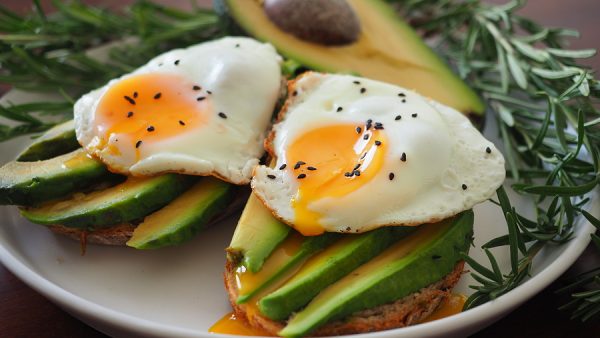By David Blyweiss, M.D., Advanced Natural Wellness
Ask someone what their breakfast consists of and you’ll get a wide array of answers. Some people skip it altogether. Others take the easy route. Coffee with a muffin, bagel or toast. Maybe cereal, a pastry, waffle or breakfast bar.
Then there are the traditional breakfast eaters who go for pancakes, French toast, breakfast sandwiches or eggs with ham, bacon or sausage.
But are any of these the right way to start your day?
In many ways, breakfast really is the most important meal of the day – whether you eat it at 7 a.m. ,(or 10 a.m. if you’re intermittent fasting)
If you load up on simple carbs like bagels, Eggos, pastries, cereals and pancakes at the beginning of your day, you are setting yourself up for blood sugar spikes and crashes that add to weight gain and contribute to the development of type 2 diabetes.
They will trigger feelings of hunger and unhealthy food cravings that can lead you astray of healthy eating patterns.
And those processed meats won’t do you any favors, either. They are loaded with sodium, nitrates and other chemicals that contribute to heart disease and stroke.
Breakfast literally means “breaking the fast”. And if you do it right, you can shut down cravings, blood sugar problems and weight gain instantly.
Why You Should Eat Healthy Fats at Breakfast
Your body needs healthy fats. And the best time of day to get them is at breakfast. You can include a high-quality protein and some plant-based carbohydrates. But make fat the focal point since it will provide you with a steady source of energy to fuel your activities throughout the day.
They will keep you feeling full longer and help keep your blood sugar steady between meals. Plus, when healthy fats are consumed early in the day, there is plenty of time to burn them off so they don’t end up getting stored as excess fat in your body.
Even better, they will reduce those blood sugar spikes and crashes that leave you feeling tired and can lead to diabetes. Plus they will help get rid of those cravings for unhealthy snacks that can pop up after eating a breakfast high in sugars and simple carbs.
Some good choices of healthy fats include eggs, wild-caught fatty fish, avocados, plant-based yogurt, nuts, seeds, coconuts and grass-fed beef. Include some plant-based carbohydrates to help support your fiber needs.
When to Get Your Proteins and Carbs
By the time lunch rolls around, you are hitting your most active time of the day. This is where you want to make protein the hero on your plate.
We need a steady source of protein all day long, but we tend to eat less of it as we age. Plus, the older we get, the harder it is for our bodies to synthesize protein. And we need a good 60 to 75 grams a day to support healthy bone and muscle mass.
It’s a good idea to vary your protein sources from day to day. Make sure to include some plant-based proteins to not only boost your protein intake, but to increase your fiber intake as well. What a duo, protein and fiber in the same foods!
Some great low-fat sources of animal protein include poultry, shellfish, pork and white-fleshed fish. When it comes to plant-based proteins, you can’t beat legumes like kidney, lima, navy beans, peas, chickpeas and lentils. Soy-based proteins include tofu, tempeh and edamame. And on the grain side of things you’ve got quinoa, amaranth and buckwheat.
I also like to get in some protein between meals, like lean turkey, chicken or cheese with a celery stick or gluten free cracker.
Dinner is where the carbs come in.
When you eat non-starchy carbs later in the day, they help balance blood sugar and insulin levels, and boost the production of your satiety hormone. So this eating pattern not only promotes a healthy metabolic profile, it also suppresses hunger which can help with weight loss.
This is a great reason to load your dinner plate with organic, non-starchy veggies from any and all colors of the rainbow. The greater the variety of colorful plant-based foods you eat, the healthier your gut microbiome will be. And since the gut microbiome has a large influence on blood sugar control, this is one more step to a healthier metabolic profile and a healthier you.
SOURCES:
Micha R, Michas G, Mozaffarian D. Unprocessed red and processed meats and risk of coronary artery disease and type 2 diabetes–an updated review of the evidence. Curr Atheroscler Rep. 2012 Dec;14(6):515-24.
Kaluza J, Akesson A, Wolk A. Processed and unprocessed red meat consumption and risk of heart failure: prospective study of men. Circ Heart Fail. 2014 Jul;7(4):552-7.
Bush NC, Resuehr HES, Goree LL, Locher JL, Bray MS, Soleymani T, Gower BA. A High-Fat Compared with a High-Carbohydrate Breakfast Enhances 24-Hour Fat Oxidation in Older Adults. J Nutr. 2018 Feb 1;148(2):220-226.
Sofer S, Eliraz A, Kaplan S, Voet H, Fink G, Kima T, Madar Z. Changes in daily leptin, ghrelin and adiponectin profiles following a diet with carbohydrates eaten at dinner in obese subjects. Nutr Metab Cardiovasc Dis. 2013 Aug;23(8):744-50.
Sofer S, Eliraz A, Kaplan S, Voet H, Fink G, Kima T, Madar Z. Greater weight loss and hormonal changes after 6 months diet with carbohydrates eaten mostly at dinner. Obesity (Silver Spring). 2011 Oct;19(10):2006-14. Gérard C, Vidal H. Impact of Gut Microbiota on Host Glycemic Control. Front Endocrinol (Lausanne). 2019 Jan 30;10:29.




